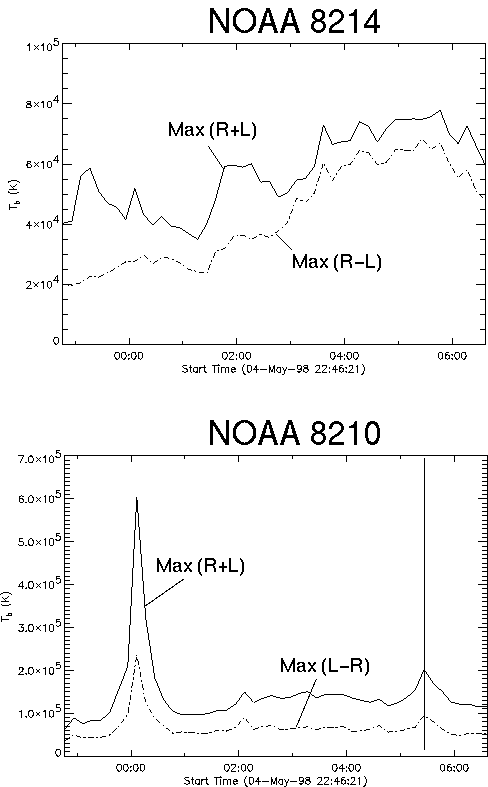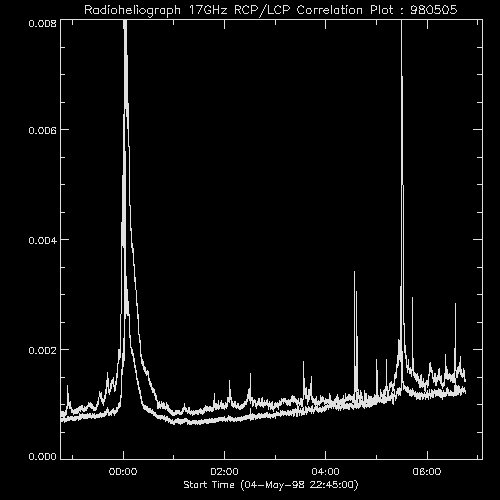
Active regions NOAA8210 and 8214 are seen as bright compact sources in microwaves. Two flares occured in NOAA8210 today.
EventID : norh19980505_0529
Observer : K. Shibasaki and K. Hori
Keyword : Flare
Start : 1998-05-05 05:00:00
End : 1998-05-05 06:45:00#
Peak : 1998-05-05 05:29:25
Maximum Correlation @17GHz (x10^-4) : 156
Position : S16W50
GOES : C1.5
NOAA Number : 8210

Active regions NOAA8210 and 8214 are seen as bright compact sources
in microwaves. Two flares occured in NOAA8210 today.
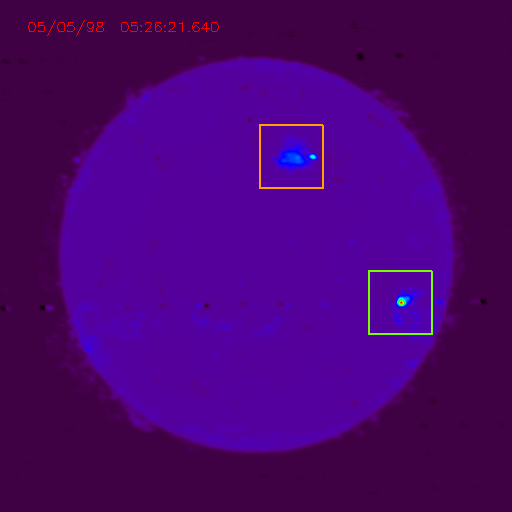
NORH 17GHz full disk image, just before
the second flare in NOAA 8210.
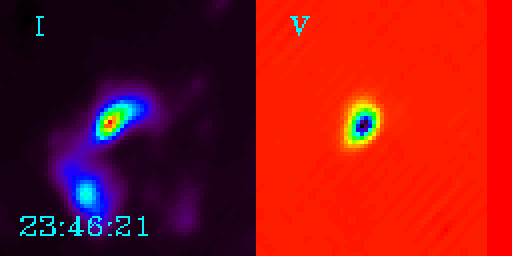
PFI of NOAA 8210.
FOV is shown as a `green' box
in the top full image (314" X 314"). Right image shows I-component (R+L) emission,
and left image shows V-component (R-L).
A strong LCP source is located at the center of this AR, and
many RCP sources are surrounding the LCP source.
Although many flares have occured in this AR, a brightenning location, which corresponds
to one footpoint of flare loop(s), changes among the RCP sources (e.g., see PFIs on
Apr 29 and May 2).
Color is scaled to the maximum brightness temperature in each image.
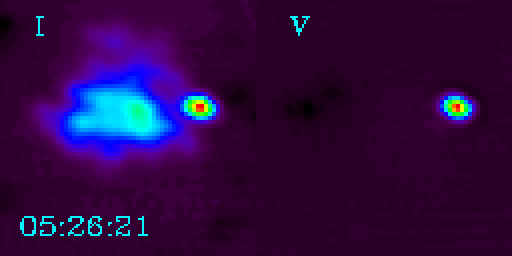
PFI of NOAA 8210.
FOV is shown as an `orange' box in
the top full image (314" X 314").
The faint region following the compact RCP source is bright in both 17 and 34 GHz,
which suggests an existence of dense loops in this faint structure.
17GHz light curves (time profiles of the maximum brightness temperature
in the above fixed PFIs) for the two ARs.
Since each image is made every ten minutes for a convenience,
data points taken when flare occured (around a vertical
line) are missing in these figures.
See the above correlation plot.
